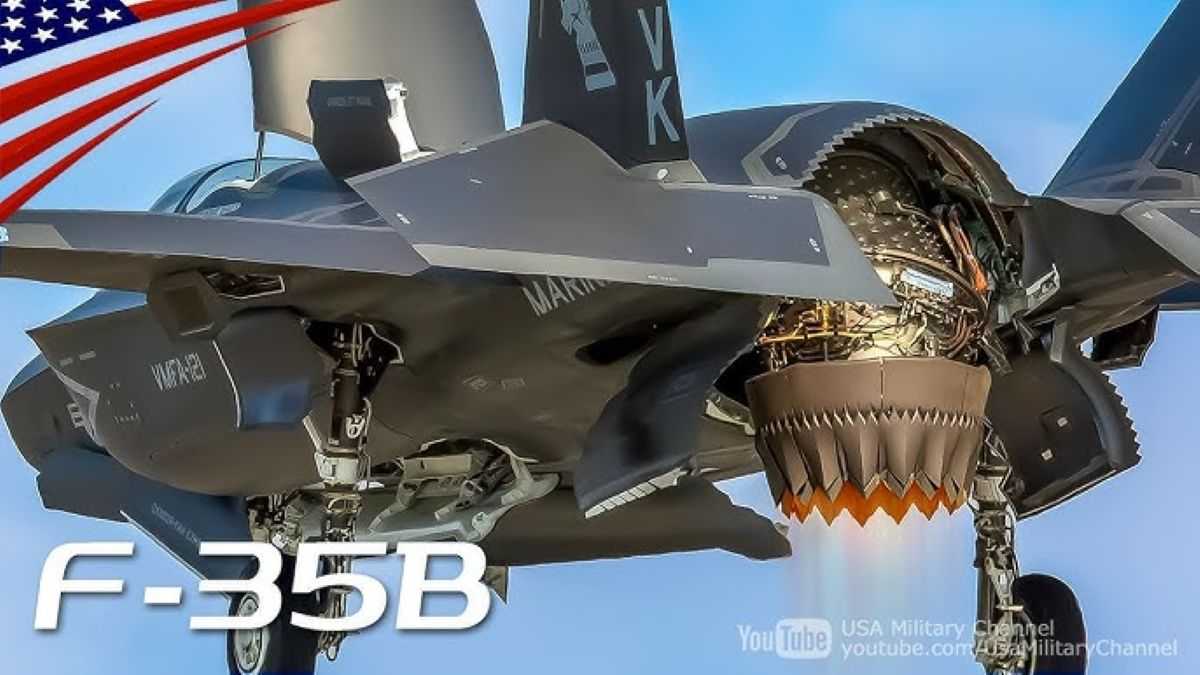
Thiruvananthapuram (June 21, 2025): A cutting-edge F-35B Fighter Lightning II stealth fighter jet from the British Royal Navy, valued at nearly $100 million, has remained grounded at Kerala’s Thiruvananthapuram International Airport for over a week. The jet made an emergency landing on June 14 due to a mid-air technical fault, and now a technical crew of over 30 Royal Navy personnel is scheduled to arrive with essential spare parts to inspect and possibly repair the aircraft.
What is the F-35B Fighter Jet?Read here
Source: TOI Bharat
The Emergency Landing: What Happened?
On the night of June 14 around 9:28 PM IST, the F-35B Fighter Lightning stealth jet made an emergency landing at Thiruvananthapuram International Airport. The aircraft was part of the ongoing “Operation FIghmast” Indo-Pacific deployment, stationed aboard the HMS Prince of Wales aircraft carrier, which was conducting joint naval drills with the Indian Navy in the Arabian Sea.
Why Hasn’t It Taken Off Yet?
After the emergency landing, a replacement pilot and engineering team were flown in by helicopter. They attempted to restart and fly the aircraft multiple times but failed. According to aviation experts, the issue likely lies in the jet’s hydraulic system, which controls critical operations like landing gear and maneuverability.
British Repair Team En Route
In the latest development, over 30 Royal Navy technicians and specialists are being dispatched to Kerala along with replacement parts. Their objective is to conduct a full inspection, troubleshoot the system fault, and attempt repairs.
If the fault is deemed irreparable onsite, the aircraft may be dismantled and returned via a C-17 Globemaster transport plane or shipped via sea routes.
Extreme Caution: Why It’s Still Outside
Despite an offer from Air India to shift the aircraft into a hangar, the Royal Navy declined, citing the classified nature of the F-35B Fighter’s stealth technology and electronic systems. The fighter jet remains secured in an open-air section of the airport, guarded round-the-clock by Indian and British personnel.
F-35 Costs So Much – Forbes Report
This is the first-ever F-35B Fighter to land in India, making the event both strategically significant and logistically sensitive.
Strategic Significance for India-UK Relations
This situation is also a live demonstration of military cooperation between India and the United Kingdom. Indian authorities quickly extended technical and logistical support, while the British ensured strict protocols in handling their most advanced warplane.
The event reinforces India’s growing role in global defence partnerships, especially as it prepares to roll out its own fifth-generation fighter jet program in the near future.
A Closer Look at the F-35B Lightning II
The F-35B is a Short Take-Off and Vertical Landing (STOVL) stealth fighter developed by Lockheed Martin for carrier-based operations. Key features include:
- Stealth radar signature
- Advanced avionics and sensor fusion
- STOVL capabilities ideal for aircraft carriers
- Network-enabled warfare systems
Will It Be Airlifted?
If the aircraft cannot be fixed on-site, there is a possibility that it will be dismantled and flown back using a military cargo aircraft like the C-17 Globemaster III, a heavy-lift aircraft also operated by the Indian Air Force.
Such an operation would require significant coordination between Indian and British defence logistics teams and may disrupt other missions of the HMS Prince of Wales carrier strike group.
What This Incident Reveals
- The extended grounding of the F-35B in India sends important signals:
- India is a trusted partner in global military collaboration
- The handling of the jet showcases India’s aeronautical infrastructure
- The incident underlines how technologically complex fifth-gen jets are
- It also shows the limitations of remote carrier operations
For India, this becomes a unique learning opportunity in aircraft maintenance, defence logistics, and multi-national protocol compliance.
Stay Updated: Get the Latest Defence and Aviation News with Prime Feeds




